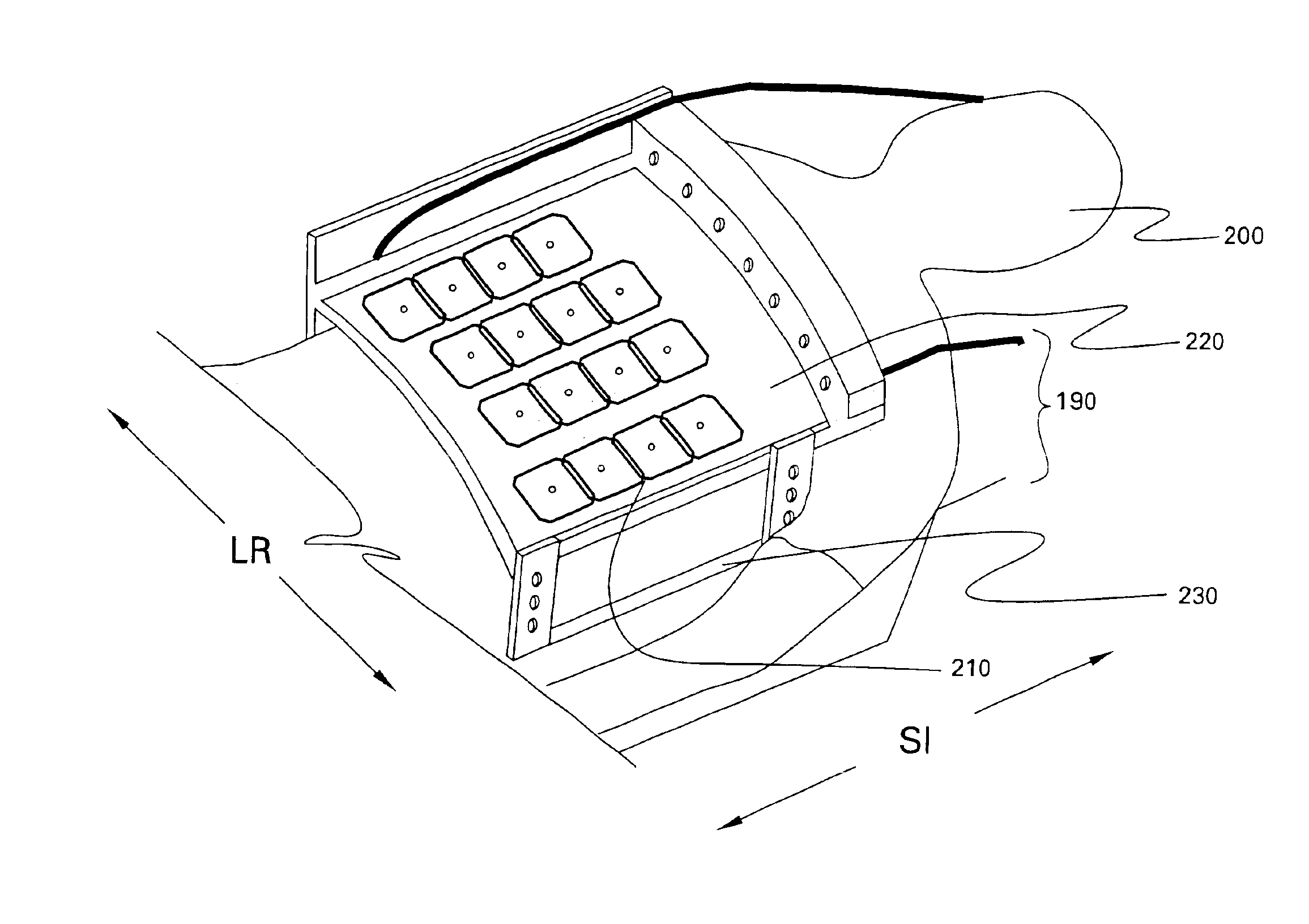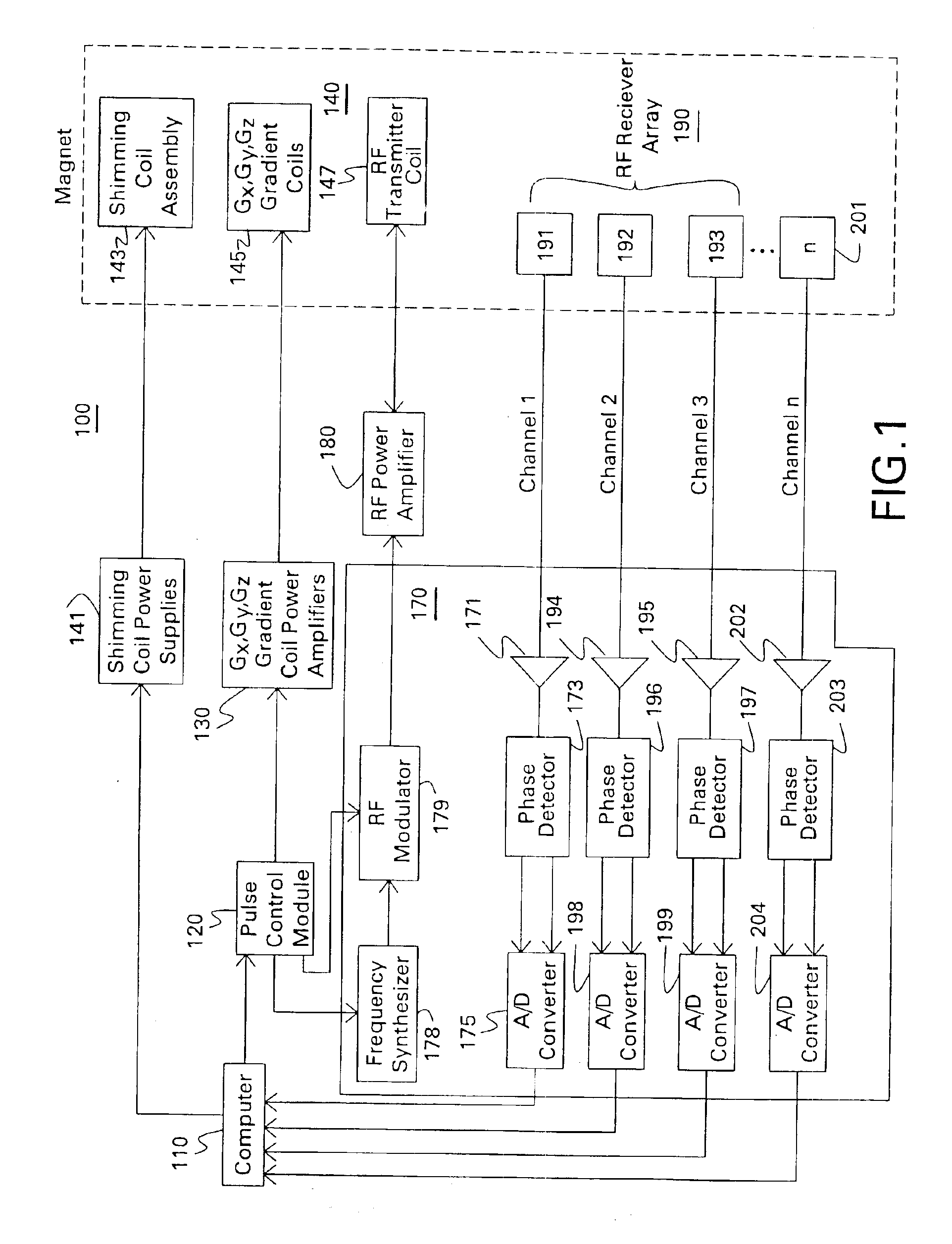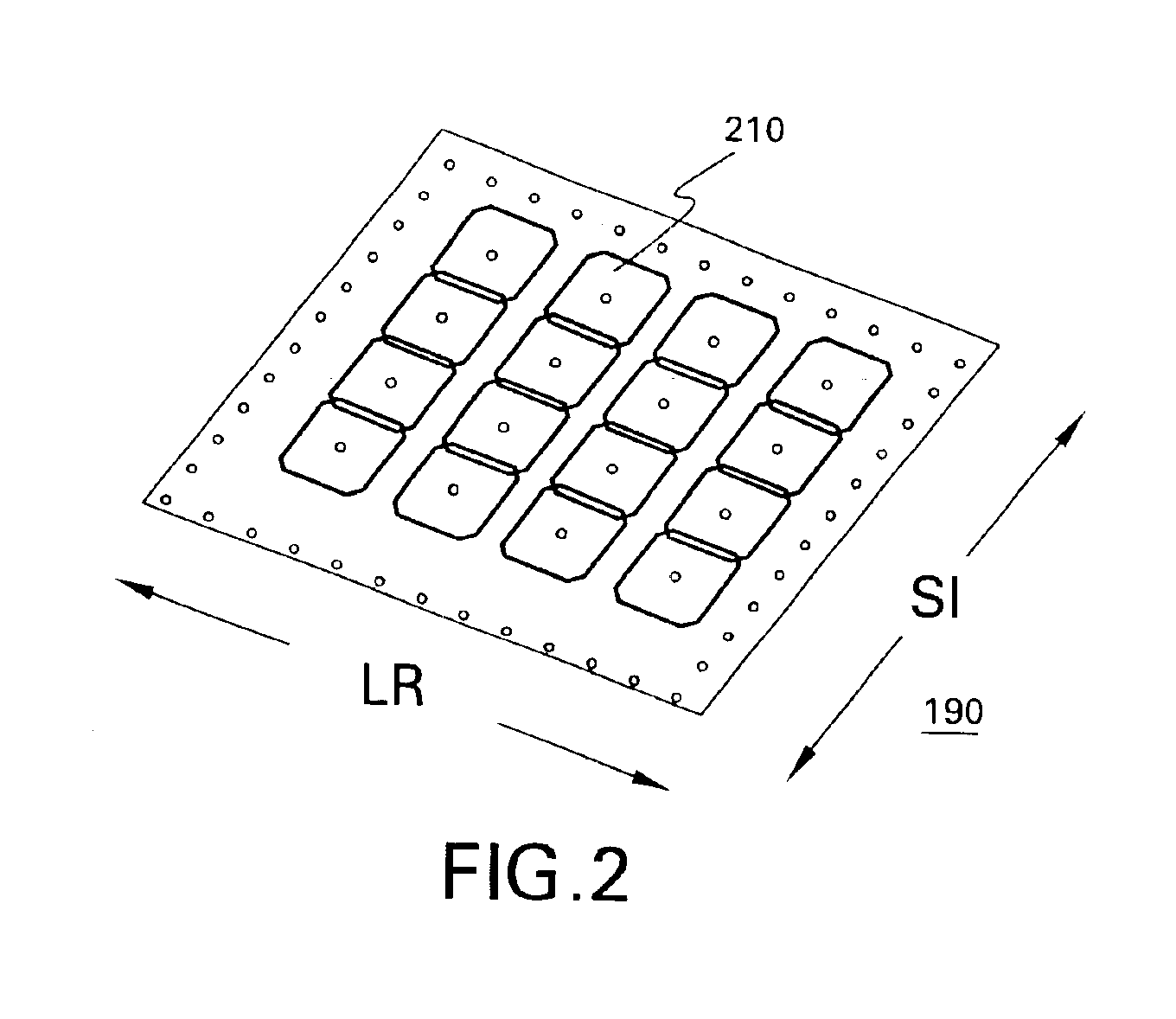Method and system for accelerated imaging using parallel MRI
a parallel imaging and accelerated imaging technology, applied in the field of parallel imaging, can solve the problems of limiting the speed with which the k-space matrix may be filled, the application of a field gradient does not allow two-dimensional spatial encoding, and the frequency-encoding gradient alone cannot make it possible to discern signals originating,
- Summary
- Abstract
- Description
- Claims
- Application Information
AI Technical Summary
Problems solved by technology
Method used
Image
Examples
Embodiment Construction
[0020]FIG. 1 is an exemplary embodiment of a magnetic resonance imaging (MRI) system 100. MRI system 100 includes a computer 110, which controls gradient coil power amplifiers 130 through a pulse control module 120. The pulse control module 120 and the gradient amplifiers 130 together produce the proper gradient waveforms Gx, Gy, and Gz, for either a spin echo, a gradient recalled echo pulse sequence, a fast spin echo, or other type of well-known pulse sequences. The gradient waveforms are connected to gradient coils 145, which are positioned around the bore of an MR magnet assembly 140 so that gradients Gx, Gy, and Gz are impressed along their respective axes on the polarizing magnetic field B0 from magnet assembly 140.
[0021]The pulse control module 120 also controls a radio frequency (RF) synthesizer 178 that is part of RF transceiver system 170, portions of which are enclosed by bold line block. The pulse control module 120 also controls an RF modulator 179, which modulates the o...
PUM
 Login to View More
Login to View More Abstract
Description
Claims
Application Information
 Login to View More
Login to View More - R&D
- Intellectual Property
- Life Sciences
- Materials
- Tech Scout
- Unparalleled Data Quality
- Higher Quality Content
- 60% Fewer Hallucinations
Browse by: Latest US Patents, China's latest patents, Technical Efficacy Thesaurus, Application Domain, Technology Topic, Popular Technical Reports.
© 2025 PatSnap. All rights reserved.Legal|Privacy policy|Modern Slavery Act Transparency Statement|Sitemap|About US| Contact US: help@patsnap.com



